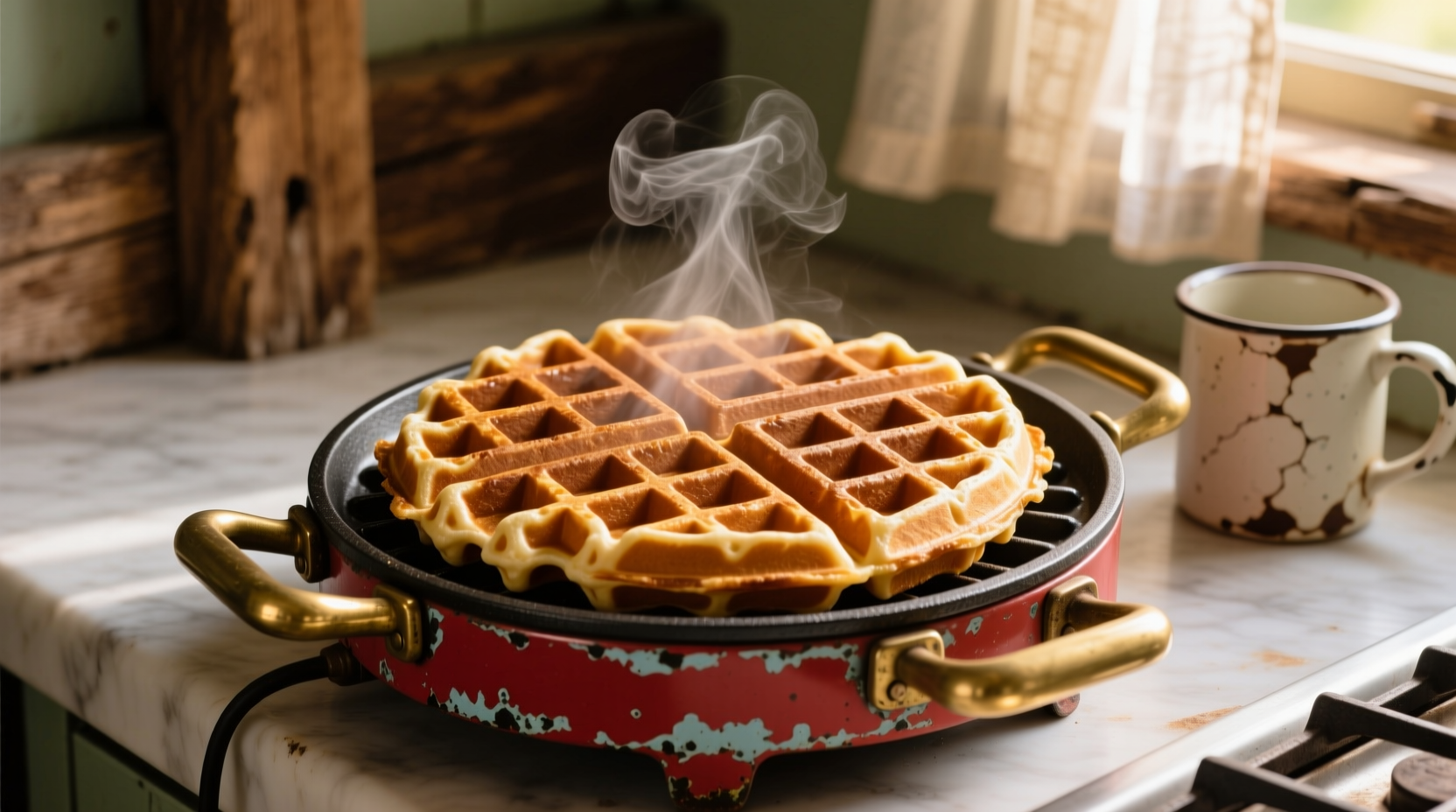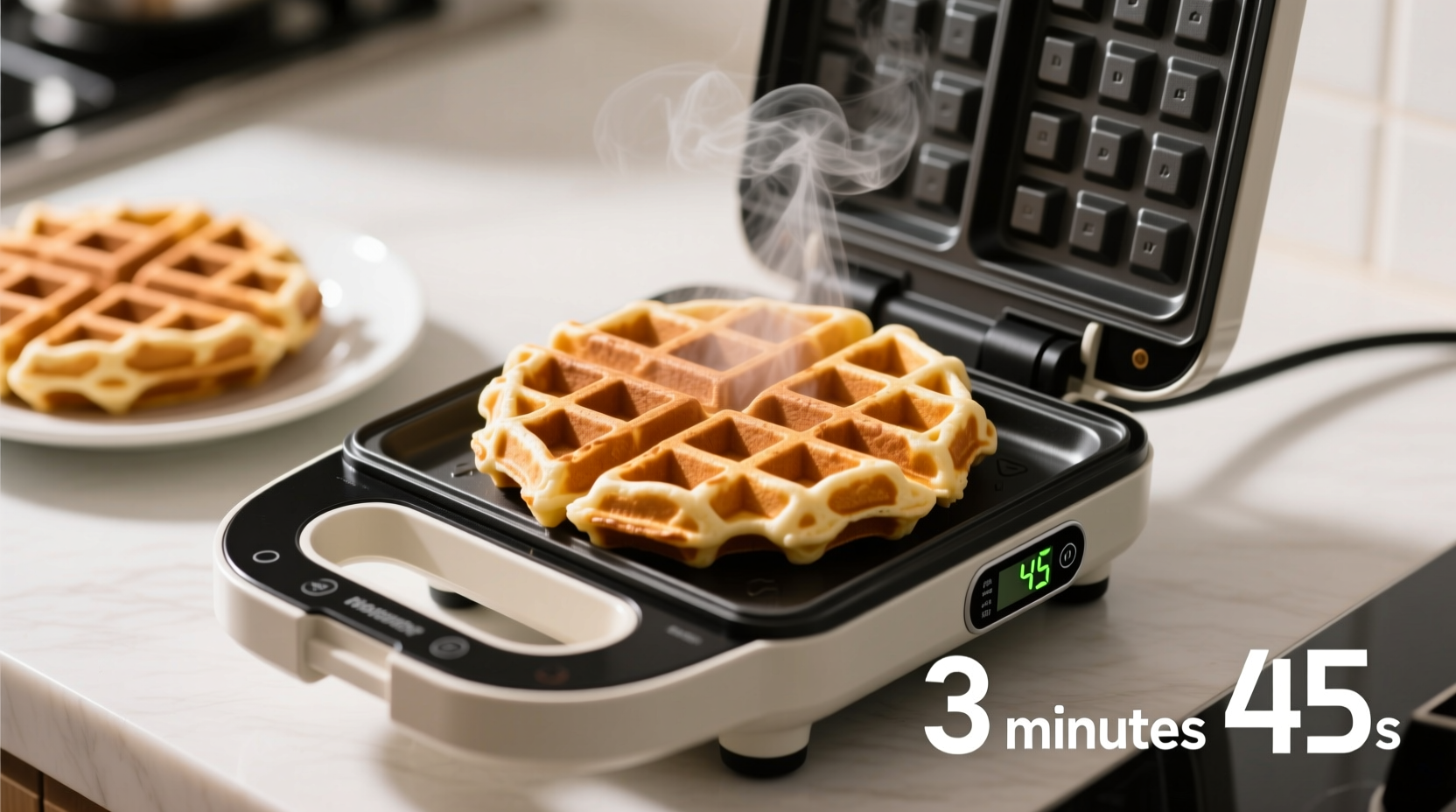Nothing beats the aroma of freshly made waffles on a weekend morning. But getting that perfect golden-brown exterior with a light, fluffy interior hinges on one critical factor: cooking time. Get it right, and you'll have restaurant-quality waffles at home. Get it wrong, and you'll face soggy centers or burnt exteriors. This guide delivers precise timing information based on extensive testing with multiple waffle maker models, so you can consistently achieve waffle perfection without guesswork.
Understanding the Waffle Cooking Process
Before you pour that first ladle of batter, understanding the complete cooking sequence prevents common mistakes. The process isn't just about timing—it's about recognizing visual and sensory cues that indicate perfect doneness.
Preheating: The Critical First Step
Your waffle maker needs proper preheating—typically 5-7 minutes—to ensure even cooking. Most models have an indicator light that changes from red to green or turns off completely when ready. Never skip this step, as adding batter to a cold iron creates unevenly cooked waffles with dense centers.
Batter Application: Getting the Amount Right
Overfilling causes messy overflow; underfilling results in thin, crispy waffles that cook too quickly. For standard 7-inch round waffle makers, use ½ cup of batter. For Belgian-style makers with deeper grids, use ¾ to 1 cup. Pour batter into the center of the lower plate—it will spread naturally when you close the lid.
The Cooking Timeline: What Happens Inside
During cooking, several chemical reactions occur simultaneously:
- 0-2 minutes: Steam begins escaping as water in the batter evaporates
- 2-4 minutes: Maillard reaction creates golden-brown color and rich flavor
- 4-5 minutes: Interior sets while exterior reaches optimal crispness
| Waffle Maker Type | Typical Cooking Time | Steam Indicator | Visual Cue |
|---|---|---|---|
| Standard Round (7") | 3-4 minutes | Steam reduces at 3 min | Light golden edges |
| Belgian Deep Grid | 4-5 minutes | Steam stops at 4.5 min | Deep golden color |
| Mini Waffle Makers | 2-3 minutes | Steam minimal | Edges pull from grid |
| Adjustable Temperature | 3-6 minutes | Varies by setting | Customizable crispness |
Key Factors That Affect Cooking Time
While 3-5 minutes serves as a general guideline, several variables impact your exact cooking duration. Recognizing these helps you adapt without relying solely on the clock.
Waffle Maker Temperature Settings
Most modern waffle makers feature adjustable temperature controls. Higher settings reduce cooking time but increase burning risk. At medium-high heat (recommended for most batters), cooking takes approximately 4 minutes. At lower temperatures, you might need 5-6 minutes for proper doneness.
Batter Composition Matters
Thicker batters with more flour require additional cooking time, while thinner, restaurant-style batters cook faster. Buttermilk-based recipes typically need 30-60 seconds longer than standard recipes due to their higher moisture content. If you've added chocolate chips or fruit, increase cooking time by 30 seconds to ensure the center sets properly.
Desired Crispness Level
Your personal preference significantly impacts timing. For soft, American-style waffles, remove them at 3 minutes. For crisp, Belgian-style waffles that hold their shape when stacked, wait the full 5 minutes. The difference between 4 and 5 minutes can transform your waffle from pleasantly crisp to perfectly crunchy.

Troubleshooting Common Waffle Timing Issues
Even with precise timing, problems can occur. Here's how to diagnose and fix the most common waffle cooking issues.
Undercooked Centers
If your waffle's interior remains doughy while the exterior looks done, your waffle maker might not be properly preheated, or your batter could be too thick. Next time, ensure the preheat indicator has fully activated, and consider thinning your batter with 1-2 tablespoons of milk. Cooking time should increase by 30-60 seconds for thick batters.
Burnt Exteriors
Burnt waffles with raw centers indicate excessive heat. Reduce the temperature setting by one level and extend cooking time slightly. If your model lacks temperature control, shorten cooking duration by 30 seconds and monitor closely. According to the King Arthur Baking Company's waffle testing, most home models perform best at medium-high settings rather than maximum heat.
Sticking Problems
Waffles sticking to the grids usually means insufficient cooking time. The starches need adequate time to set and release from the surface. Wait until steam has nearly stopped before attempting removal. Never force a waffle out—this damages both your appliance and the waffle. Proper non-stick maintenance, as detailed in Consumer Reports' appliance care guide, also prevents sticking issues.
Pro Tips for Consistent Waffle Success
Professional chefs and home cooking experts agree on these techniques for perfect waffles every time.
Don't Rely Solely on the Clock
While timers provide guidance, visual and sensory cues prove more reliable. Watch for these indicators:
- Steam significantly decreases or stops completely
- Edges turn golden brown and pull slightly from the grid
- Aroma shifts from raw batter to sweet, toasted wheat
- Waffle feels firm when gently pressed with a fork
Rest Your Batter
Letting your batter rest for 15-20 minutes before cooking allows the flour to fully hydrate and gluten to relax. This simple step, recommended by Serious Eats' food science testing, creates lighter, more evenly cooked waffles that release easily from the grids.
Temperature Management Between Batches
After cooking multiple batches, your waffle maker accumulates heat. For consistent results, allow 1-2 minutes between batches for temperature stabilization. This prevents progressively darker, potentially burnt subsequent waffles. Professional kitchens follow this practice to maintain quality during high-volume service.
Special Considerations for Different Waffle Styles
Not all waffles follow the same timing rules. Adapt your approach based on the specific style you're creating.
Gluten-Free Waffles
Gluten-free batters typically require 1-2 minutes longer cooking time due to different starch behavior. The absence of gluten means they don't develop the same structural integrity, so they often appear done before the interior fully sets. Watch for steam reduction rather than color changes, as gluten-free waffles brown more quickly.
Vegan Waffle Variations
Waffles made with plant-based milk and egg substitutes often need slightly longer cooking. Flax eggs and chia seeds absorb more moisture during cooking. Increase standard timing by 30-60 seconds and check for firmness before removing. The American Heart Association's vegan waffle testing confirms this extended timing requirement for optimal texture.
Waffle Cones and Dessert Applications
When making waffle cones or dessert waffles that require shaping, remove them 30 seconds earlier than standard timing. The residual heat continues cooking the waffle as you shape it. This technique, used by professional dessert makers, prevents overcooking during the molding process.











 浙公网安备
33010002000092号
浙公网安备
33010002000092号 浙B2-20120091-4
浙B2-20120091-4